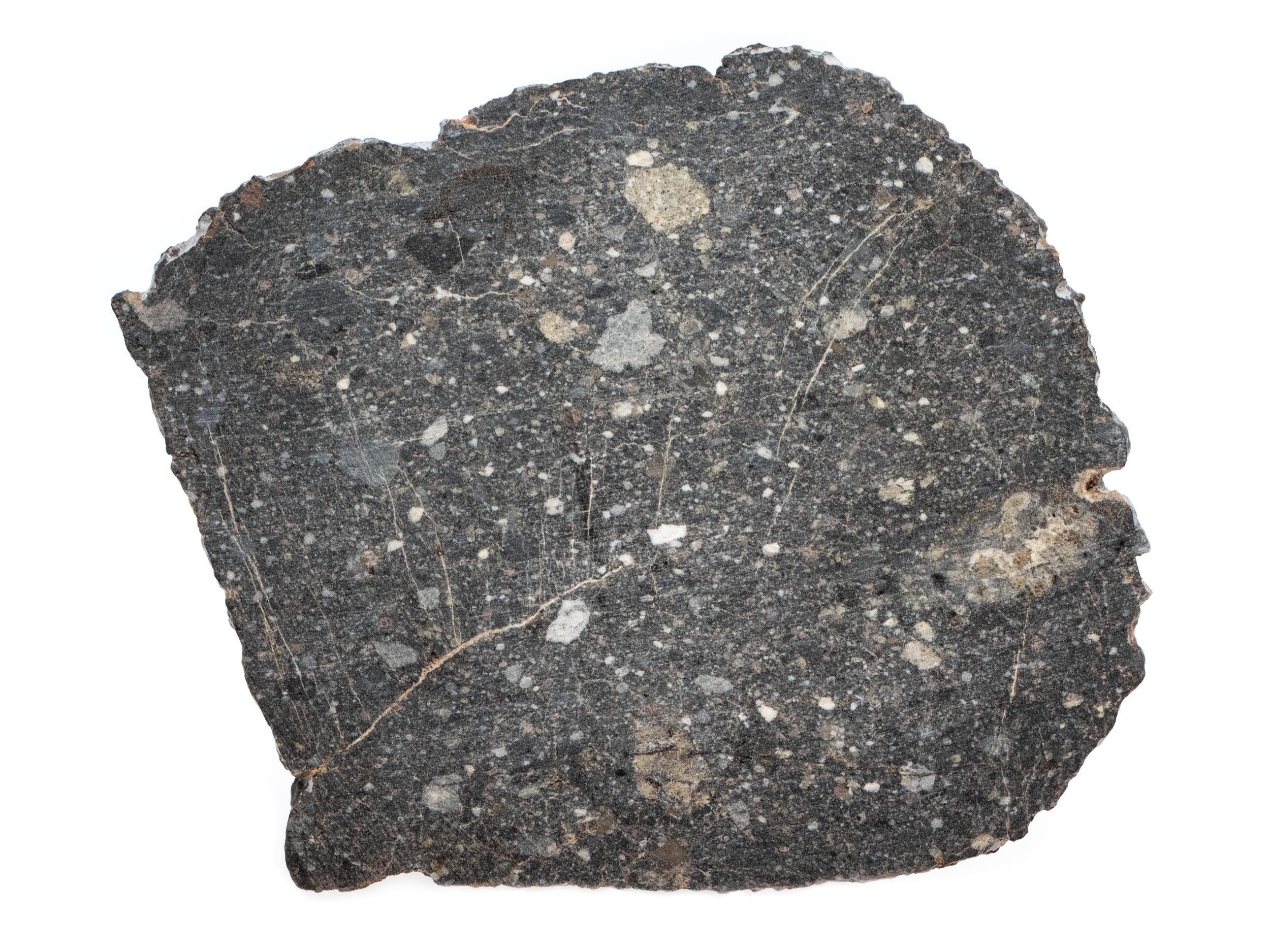
.jpg)
This is a very nice specimen featuring a fascinating look inside the physical characteristics and attributes of this meteorite. Lunar and Martian meteorites, and most achondrites (stone meteorites without chondrules) contain little or no iron and even a powerful magnet will generally have no effect on them. Small rocky objects in interplanetary space are called.
Lunar meteorite plus#
Kuehner, UWS) Breccia composed of angular mineral grains of anorthite, olivine, pigeonite, exsolved pigeonite, augite, ilmenite, Ti-chromite and troilite, plus sparse glass fragments, set in a finer-grained matrix containing small vesicles and minor barite. Most lunar meteorites sample regions on the Moon that were not visited during the Apollo missions. The fresh interior exhibits white to beige clasts in a medium-gray matrix.

These a chondrites are the results of Mars and the Moon ’s own meteorite impacts. Very few meteorites, only about 0.2 percent, come from Mars and the Moon. Physical characteristics: A single stone (583 g) lacking fusion crust. Lunar meteorites are a chondrites that crashed to Earth from the Moon, while Martian a chondrites crashed to Earth from our neighbor planet, Mars. Click here! to view the complete publication in the Meteorological bulletin database. It has been analyzed and classified as (NWA11237) as published in the meteorological bulletin.

This particular meteorite is classified as a (Feldspathic breccia). This is a genuine slice of an actual lunar meteorite.


 0 kommentar(er)
0 kommentar(er)
